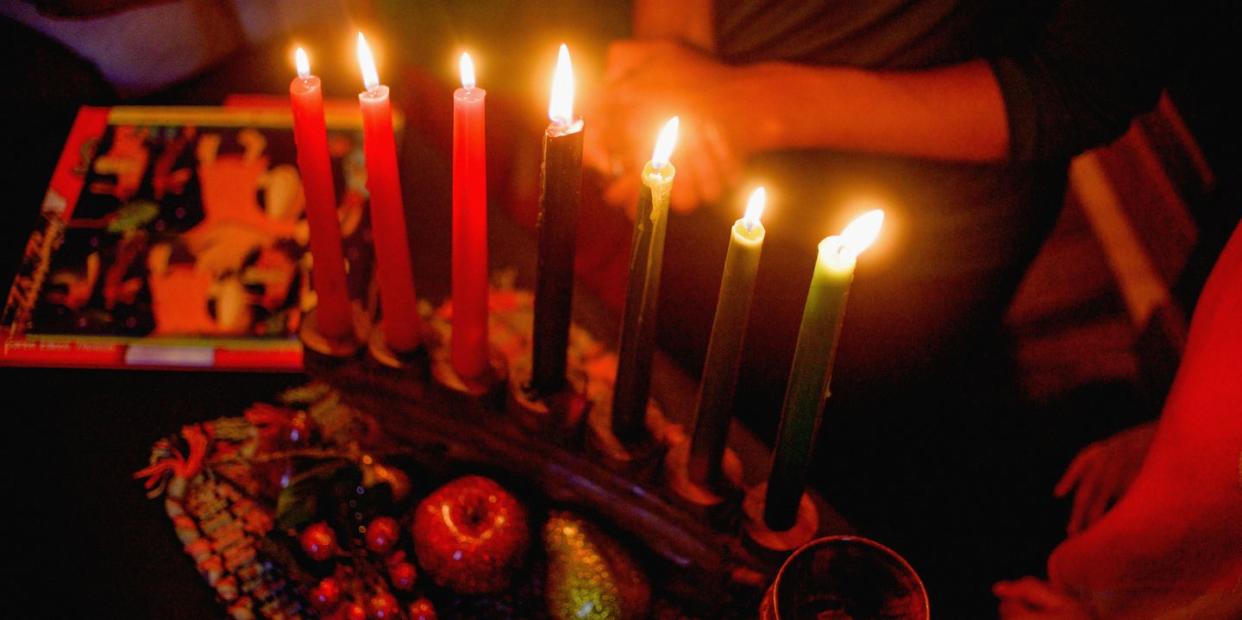Why The 7 Principles Of Kwanzaa Should Be Celebrated All Year-Round

Picture a beautiful, bright cloth with intricate details meticulously woven through. A native language that sings the praises of the land from where it originated every time it is spoken. Ceremonial dances, passed down from generation to generation. Dishes crafted from the fruits of the land. All of the things that make people from every corner of the Earth beautifully unique. Things most people take for granted are things the descendants of formerly enslaved people don't have. Over time, the desire to reconnect with the motherland and cultivate an atmosphere for the community of these descendants to come back together and support each other evolved into a celebration we now honor annually: This is the celebration of Kwanzaa.
The history of the descendants of the formerly enslaved is unique from others in the United States. After being ripped from their native land, their ancestors were also ripped of their culture: no more native language, traditional clothing, or anything that pointed back to the land from which they originated. Instead, assimilation was forced upon them until there were few remnants of their native culture.
Kwanzaa, which in Swahili means "first fruits," is a seven-day celebration that takes place each year from December 26 through January 1. On each night of the holiday, families gather to light a candle on the Kinara; each night honors one of the holiday's seven principles.
The Seven Principles (Nguzo Saba)
Unity: Umoja
Self-Determination: Kujichagulia
Collective Work and Responsibility: Ujima
Cooperative Economics: Ujamaa
Purpose: Nia
Creativity: Kuumba
Faith: Imani
You'll notice many symbols during a typical Kwanzaa celebration, some of which include ears of corn to represent each child in the family and the future they will create for our community, a straw or woven mat to represent our solid foundation, the aforementioned Kinara for the candle lighting ceremony, and a unity cup which represents one of the most important values: unity.
How To Celebrate Kwanzaa
Another hallmark of Kwanzaa is a gift exchange. These gifts are very special and meaningful. They are oftentimes handmade items given to the people who mean the most to you. The gifts can challenge the receiver or be something meant to help the receiver fulfill their purpose.
Throughout the celebration, three colors are emphasized: The color black is used to represent the people, red represents the blood shed, and green reinforces hope in knowing we have a rich future ahead.
During Kwanzaa, many communities and organizations will have festivals showcasing the beauty of the African culture. People will gather to join in traditional dances, listen to music, support Black-owned businesses, eat traditional food, and more. The spirit of Kwanzaa is not only celebrated for one week, but should be embodied throughout the whole year: Ensuring that dollars are circulating throughout the Black community through Black-owned businesses, creating financial opportunities for homeownership, ensuring proper healthcare is easily accessible, and ensuring that education is equitable for all are year-round priorities.
The next time you visit your favorite restaurant that is Black-owned, recreate a recipe from your favorite Black chef or food influencer, or are invited into the home of someone who you have a great relationship with, think about how you can play a part in keeping the spirit of Kwanzaa alive year round.
Brandi Barnett is a teacher and food blogger based in Dallas, TX. She is also the founder of The Cocoa Initiative, an organization that raises awareness for women- and minority-owned businesses.
You Might Also Like

